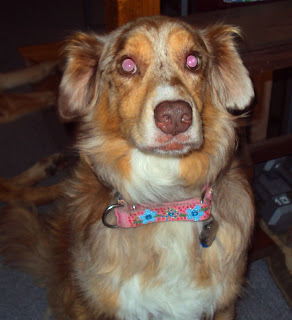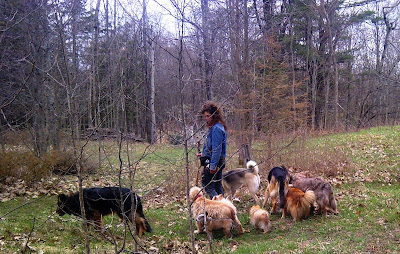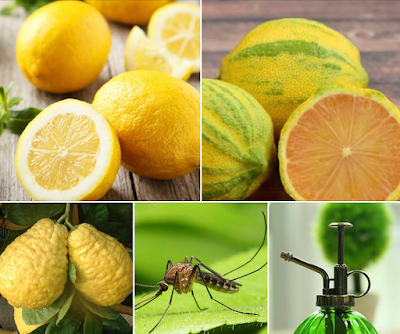THUNDER ANXIETY - PART 2
Your kit-of-tools to
success is complete, you don’t need to go out and purchase anything - you
already have what you need…you just have to dust off and polish up your tools a
little. Your tools are - your patience, persistence, determination - your will;
and a safe, comfy, not too large space for your dog to stay. We will get into
the details below.
And please be further
reassured - the age of your dog does not matter, puppy, teenager, adult or
senior dog - all is possible.
Of my ten dog pack -
primarily rescues - two of the females were severely affected by thunder and
gun shots - Abby my German Shepherd x Belgian Shepherd and Tasha my Australian
Shepherd. Tasha also had separation anxiety.
If the air pressure
change signalled the on-set of a T-storm Abby would start to quiver, then
shake, pant and then tremble so acutely - her heart beat was as if she would
have a heart attack. I adopted Abby at 18 months of age - she arrived with this
anxiety. Tasha would also have these physiological symptoms. They would dash
about looking for a safe haven - jumping into the bath tub, wrapping around the
base of a toilet, moving from one place to another in search of safety - in
total panic, meltdown, shut down. With patience and the right type of care they
are both much better today.
The key to stop the
meltdown and shut down is to provide leadership - eventually you will see
improvement. If you have not already red these two articles you will need to in
order to have a full understanding of your role as guardian through the storm! Leadership,
Sensitivity,
Dogs
and Thunderstorms Part 1
FIRST PLEASE DO NOT ANTICIPATE - PLEASE STRATEGICALLY
LEAD
If, at the first sign
of rain, storm, thunder - you feel any negative thought/emotion anticipation,
even release a sigh - it will reinforce your dog’s reaction to the incoming
storm! To help break the pattern - the association ever little bit counts. Really
the first place to start is to switch your own association - switch your entire
psyche to focus on work. Being your dog’s guardian, leading - it is work. When
we remain in personal mode we are emotive, and this makes us ineffective as we
forget to disengage from emotion. Our expectations and communication becomes
clouded rather than clear. We get too close, too involved in emotion and
argument. When we switch our brain to working mode our expectations are
different than when we are not working. When we think work - we employ logic, we
direct, we are confident and calm.
Dogs want direction
not sympathy. If you see your dog start to react…ears go down, tail goes down,
a shiver, a whine switch modes immediately! Don’t feel sorry; instead switch to
work and action from a calm and determined perspective.
Timing as in many
situations is everything. The sooner you strategically intervene the better.
Most dogs that are
afraid of thunder (gun shots, fire works) go into flight mode, they run about
looking desperately for somewhere safe to go. Freedom to run about only makes
them more desperate.
If your dog is crate
trained, calmly, confidently bring your dog to its crate, guide your dog in and
close the crate door. Your dog may try to evade going into the crate - don’t feel
bad - just be calm, no panic, have no second thoughts - guide your dog in. Your
dog is simply struggling as they are in panic mode and are accustomed to fleeing,
remember if you have an ingrained habit it is normal for you to seek
fulfillment of that habit. If they have a favorite toy, you can put it in the
crate too.
If your dog is not
crate trained then have another small space in which you can confine your dog -
the space should be large enough to fit a comfy dog bed - no bigger no smaller.
If the space, crate
that you confine your dog in can be located in a quite corner within a space near
where you will be, coming and going that is fine. I tend to use a crate in the
kitchen or living room for this purpose. Don’t hide the dog away in some remote
space - you want them to learn not to cower and hide. While you work to get
them accustomed to normalizing storms they need to feel secure not sequestered.
Once your dog is in
the space or crate, walk away. Don’t say anything, don’t look, don’t touch, don’t
feel anything but calm. As you go through this entire process you need to think
‘thunderstorms are normal, and you, my dear dog need to get accustomed to such
storms and that is it’. And then you should go about your business in a normal,
relaxed fashion - forget how your dog feels and what your dog is doing. By
normalizing this in your mind, by relaxing and not treating the storm as
anything more you will help your dog to normalize.
Right now you may think
you need to stay by your dog’s side, that you need to touch them, say
affectionate things to them…but if you do these things you are telling your dog
that the situation is not normal. You are reinforcing their anxiety. Just think
about it. Instead if you settle them into a comfortable spot, get up and go
about your business - you are saying this is normal, be normal. This is what your
dog really needs. To feel from you that all is well, normal and safe.
You may be thinking -
but my dogs comes to get me and expects me to be there holding her and talking
to her. She only does this because it is the pattern you have set in motion -
you have not shown her what else she can do - relax - you have not shown her
where - in a safe, comfortable contained space. She has no other option. Give
her an alternative, be patient and allow her to adjust. Give her proper
direction - calm, confident logical - no playing into emotions hers or yours.
You may not see any changes the first time but be patient, just wait. This is a psychologically
driven situation - patience and confidence is key. The first time you may see
little change - don’t worry. Persist. Soon you will see your dog learn to calm
and sleep in comfort. Eventually they will not require such confinement.
Remember your most
effective tool is your own state-of-being - employ calm, confidence and logic. Lead
by the right example. Don’t engage in fuss, emotion and worry - you will make
your dog worried and stressed. This is all about changing your dog’s
association with thunder storms and your bad habits of supporting and enabling psychological
trauma with emotion.
Holistic Diet, Nutrition, Wellness Services Tailored to Your Individual Dog and Cat
For information about my holistic diet, nutrition and wellness services, visit my holistic wellness services page.
Maintain good health | Address acute and chronic health issues | Pre and post surgery support and recovery
My holistic wellness services are available worldwide via video consultation.
🌎 USA | Canada | UK | Europe | Australia | New Zealand | Asia | South and Central America | Africa | UAE
📱FaceTime | Facebook | Skype | WhatsApp
To set-up your holistic wellness consultation get in-touch via email, go to my contact me page.
Holistic Behavioral Services for Your Dog
For information about my holistic behavioral services, visit my holistic behavioral services page.
For dogs of all ages, sizes and breeds.
My behavioral services are available worldwide via video consultation.
🌎 USA | Canada | UK | Europe | Australia | New Zealand | Asia | South and Central America | Africa | UAE
📱FaceTime | Facebook | Skype | WhatsApp
To set-up your holistic behavioral session get in-touch via email, go to my contact me page.
Affiliations to Companies
✓ None.
✓ I don't sell food, supplements, or other products.
✓ I'm not aligned with any companies.
Article and graphics by Karen Rosenfeld.










